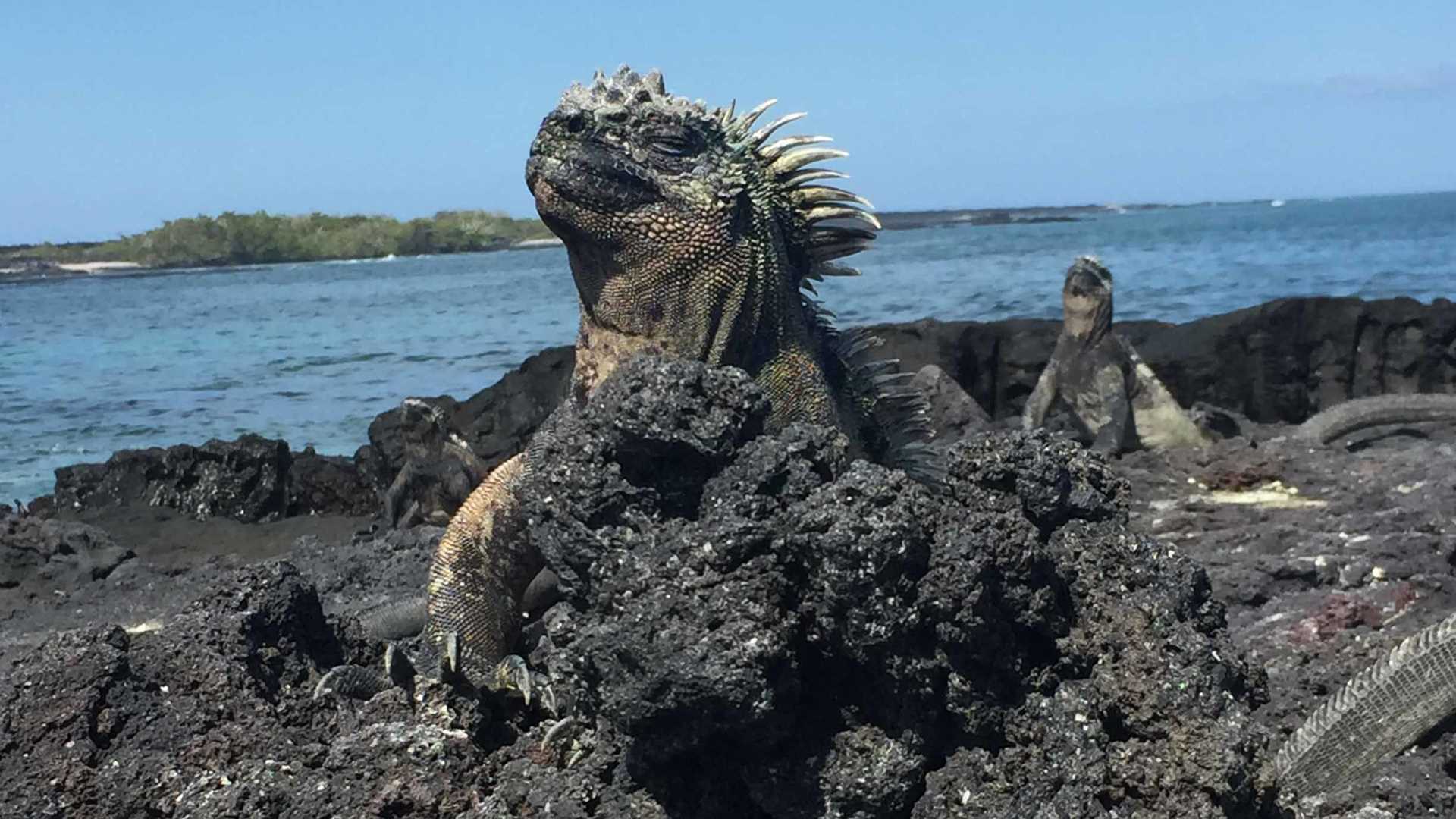Located in the westernmost region of the archipelago, Fernandina is considered the youngest island with one of the most active volcanoes in the world. Our day began early in the morning, sailing along the northern hemisphere admiring the impressive landscape of the Ecuador volcano, while in the ocean, we observed some mola molas (oceanic sunfish) swimming near National Geographic Endeavour II. At a distance, Fernandina looked barren and black; but when we arrived at the landing area, our first impression of the island changed completely due to the exuberant flora and fauna we observed.
After breakfast we visited set foot on the island, observing huge marine iguanas adopting sun basking positions as adoring the sun and lava lizards displaying their beautiful colors, making displays of power that looked like pushups. We crossed black lava fields, with some collapsed parts due to many lava tubes beneath connected with the ocean, forming real oases of water inland with abundant mangroves growing as if they were along the seashore. On the top of them we observed Galapagos hawks, waiting for a good opportunity to catch an iguana or a lizard. Probably the best part of the hike was when we arrived to the flightless cormorant nesting area; three Galapagos penguins swam close to the shore trying to catch some fish. They stayed there for many minutes, while on the rocks, a couple of cormorants fed their chick.
After the hike, we came back to Fernandina’s beach, to explore the incredible underwater world along the coast of the island. The snorkeling was so exciting—we observed some marine iguanas feeding on algae, penguins swimming close to our guests, flightless cormorants diving among the rocks looking for some octopus and playful Galapagos sea lions.
In the afternoon, National Geographic Endeavour II sailed north to Punta Vicente Roca, at Isabela Island. At 3:30 p.m. we headed to the island riding Zodiacs along the coastline to observe the gigantic Ecuador Volcano and learn about its explosive geology past. It was impressive, with lava dikes, lava incrustations and compacted ash creating a very colorful landscape. We observed Galapagos penguins on the rocks drying their wings, next to a group of flightless cormorants that were collecting seaweeds to make nests.
With the last beams of sun, we celebrated the crossing of the Equator with our guests, dancing the limbo while observing a beautiful sunset. In the air above us, some marine birds returned to the islands after an incredible day in the Galapagos Islands.







